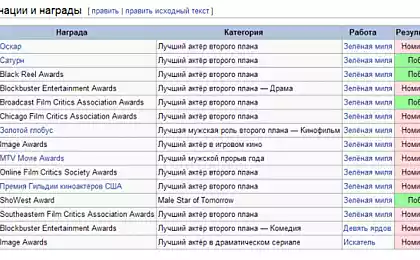1108
7 sins ...

Recently, in the article "7 errors in the management of contextual advertising" we looked at common mistakes new entrepreneurs and marketers. One of these errors was showing ads on the home page, and not on a specially made landing page (landing page), which is placed in the offer. Imagine that such a mistake we made our announcement and leads to the desired page. But what should this page? Consider the example of a typical error landing page.
1) Offer is not relevant advertising
The biggest mistake that can put an end to any advertising budget. Even at the correct landing page - this is a situation where an offer on it does not coincide with what was presented in the advertisement. For example, in the ad content it was about laptops for 15 thousand rubles, and after going to declare a visitor sees that he offer laptops of the same brand, but 30 or 40 thousand. Even if he is willing to potentially would buy them, most likely, he will leave the page. And your proposal was not interested.
The offer on the landing page should match what you are promoting.
2) The title is misleading
It may happen that the offer on the landing page will match the advertising, but his header is not. Someone might say that this is a small error and the user will understand. Alas, the first thing a visitor will notice - is the title of the proposal. And it should not be misleading. The title should clearly reflect what was presented in the advertisement. And be specific. It's a little sin that leads internet marketers to hell.
3) No reviews, and elements of trust
Another mistake landing pages - the complete absence of real reviews about your product. By themselves, the reviews are very helpful - they seriously increase the credibility of your product or service. People understand that someone else has already used them to me and was satisfied. So ignore this tool just not worth it.
Now about the elements of trust. This can be any known people certificates. For example, if it is a company that produces software for the operating system of Windows, it can be certified Microsoft. In simpler cases, logos known media with reference to their reviews.
4) The presence of distractions proposals
The landing page should be specific. It is important that other proposals and some completely unnecessary additional information is confusing visitors. So should restrain his ardor and reduce the number of unnecessary things on the page. Focus on your USP that you want to convey to visitors of this page. Even if you want to interest visitors something else, try to make it part of your basic proposal. Something like, "When purchasing products A (basic offer) and B you get free items in».
5) For the order follow ...
Another sin - the complexity of the order. Do not need to complicate all our potential customers. They should be able to make an order directly from the landing page. It is not necessary to ask them to proceed to the main, perform so some action, then ... well, you get the idea. The landing page should give the opportunity to order the product.
There was a major attention should be paid and the registration form (application for goods). On the one hand it is necessary to specify all the information you need, but do not overdo it with the other. After all, too much form is capable of easily scare many people.
6) No call to action
A very important part of your landing page - it is a call to action. Few describe how good you product. You also need to spur the user to purchase it. Just need to say that he did it. Examples: "Register now", "Add to Cart", "purchase a product right now", "Try the demo version", "Download for free", "Spend the rapid analysis».
Particularly strong effect a call to action gets, if limited. For example, "Buy our program until July 31, and you get six months of free technical support." This is the first one. A second important point is that the appeal should be one page and specific enough in this case. It is not necessary to divert calls to other visitors who are just introduce them astray.
7) Lack of testing
Tips bit corny, is not it? The way it is. Moreover, the universal solution for high-quality landing page does not exist. Of course, the previous 6 points should be observed - it's just all the basics. But it should be actively experiment and measure the results in search of the best option. You can do different landing pages and display them with the help of A / B testing in contextual advertising in equal proportions, and then choose the most effective solutions. Even the slightest change in the text or the application form for the goods may have an impact. And if you test and measure the results, sooner or later you will find your ideal landing page.
However, in such cases, do not forget about two things. Firstly, there is such a thing as a lazy conversion. This is where visitors will learn about your product online, but buy it already offline. And not once. These things also need to track (how to do it here). Secondly, if you are selling a product through the sales department, and it does not work effectively, even at high conversion website may have no effect (transactions can fall apart during intercourse and client managers, when, in fact, comes the sale itself).
As you can see the major sins landing pages are not so much. I specifically did not indicate any specific things. A collected only the basics, which in principle are universal and fit all (or almost all).























